This week’s Economic Intelligence Report reviews economic trends in Nigeria and beyond for the period July 05-11, 2025, including rising FX pressures, monetary policy developments, Naira performance, sector PMI, and capital market gains. It also tracks global trade shifts, oil price movements, and major corporate milestones such as GTCO’s dual listing.
US Trade Tensions and Global Economic Fallout
In a significant escalation of trade tensions, U.S. President Donald Trump has announced a 35% tariff on Canadian goods, citing a “financial retaliation” to earlier duties. The new tariffs are set to take effect on August 1, 2025, alongside additional blanket tariffs of 15–20% on other trade partners.
Adding to the turbulence, the US confirmed a 50% import duty on copper, aligning it with existing levies on steel and aluminum, and hinted at a possible 200% tariff on pharmaceuticals in the near term.
These developments are likely to strain ties with the U.S.’ key allies, disrupt global supply chains, and introduce fresh volatility into both commodity and equity markets.
While the short-term goal may be to shield U.S. industries, the broader consequences—retaliatory tariffs, higher input costs, and imported inflation may pose real risks to domestic and global growth.
Looking ahead, we expect these aggressive trade measures to dampen investor confidence and spark further market swings.
Mixed Global Growth Trends
The UK economy posted another mild contraction in May 2025, shrinking by 0.10% after a 0.30% dip in April, according to data from the Office of National Statistics (ONS).
Despite earlier hopes for a rebound, buoyed by easing energy prices, the momentum still remained weak, as gains in their services sector were not sufficient to offset declines in industrial production and construction.
The back-to-back monthly contractions have raised fresh concerns that economic growth for Q2:2025 may fall short of earlier projections, with risks tilting toward stagnation or further weakness.
The recent data paints a picture of an economy still struggling, weighed down by structural pressures and waning business momentum.
This softer growth trajectory, alongside continued disinflation, strengthens the case for the Bank of England to consider rate cuts in the coming quarters.
Market participants may begin to price in policy easing in the near term, a move that could weaken the pound while lending near-term support to the equities market.
South Africa’s Tentative Industrial Recovery
After six consecutive months of contraction, South Africa’s manufacturing sector showed signs of recovery in May 2025, posting a growth of 0.50% YoY. This marked a significant reversal from the sharp 6.40% decline recorded in April.
The strongest support came from the basic iron and steel, non-ferrous metals, metal products, and machinery segment, (+4.30% vs -6.50% in April) – contributing 0.9pts to overall output.
Other key contributors to the recovery included the glass and non-metallic mineral products sector (+4.20% vs 2.00%), wood, paper, and publishing (+3.10% vs -0.60%), and textiles, clothing, and leather (+1.70% vs -4.30%).
Interestingly, this rebound occurred despite growing trade headwinds, particularly the 30% tariffs imposed by the US in April, which added new challenges for South African exporters.
Nonetheless, the May performance signals tentative stabilization in the industrial sector following the Q1:2025 GDP slowdown of 0.10%, largely weighed down by weakness in both manufacturing and mining sectors.
Looking ahead, improving domestic demand and some relief in power supply constraints could provide further support for the sector’s recovery in the near term.
CBN Oversight and Sector Resilience
The Central Bank of Nigeria (CBN), this week, directed banks under regulatory forbearance to submit a comprehensive Capital Restoration Plan. The plan is expected to outline a clear path toward meeting capital adequacy requirements, focusing on cost optimisation, reduction of risk-weighted assets, and realignment of affected banks’ business models.
In addition, banks are now required to submit quarterly disclosures on key performance and compliance metrics to the Apex bank to enhance transparency and regulatory oversight.
This move signals increased regulatory scrutiny aimed at strengthening the financial system.
In the near term, banks may adopt more conservative lending practices, tighten risk management frameworks, and intensify cost efficiency efforts.
While this could slow credit expansion initially, the broader objective is expected to promote the long-term sector resilience and financial well-being.
Going forward, these improved disclosures and more disciplined governance could foster greater investor confidence, reprice Nigerian financial stocks positively, supporting market valuations.
GTCO Milestone and Market Impacts
Following its recent announcement, Guaranty Trust Holding Company Plc (GTCO) has successfully listed an additional 2.29 bn ordinary shares on the Nigerian Exchange (NGX) at ₦70.00 per share.
This comes on the heels of its dual listing on the London Stock Exchange (LSE) on July 9, 2025, marking a major milestone in its public offer.
This raises GTCO’s total issued and fully paid shares to 36.43 billion, up from 34.14 billion before the additional listing.
GTCO has set ambitious post-listing targets, including a minimum dividend yield of 15% and a return on equity (ROE) of at least 25%, signaling confidence in its earnings strength and growth trajectory.
Following these developments, the ticker rallied by +14.06% WoW on the NGX.
Looking ahead, the dual listing is expected to strengthen the bank’s capital base, broaden its investor reach, and elevate its global visibility.
At the macro level, we expect cross-border listings like this to catalyze deeper market liquidity, attract foreign capital, and enhance FX inflows.
Nigeria’s PMI and Sectoral Momentum
Economic activities in Nigeria continued their upward trajectory in June 2025, according to the latest Purchasing Managers’ Index (PMI) report from the CBN. The composite PMI rose slightly to 52.3 index points in June from 52.1 in May, marking the sixth consecutive month of expansion in business conditions across key sectors of the economy.
This continued improvement reflects broad-based momentum in the second quarter of the year, with 25 subsectors reporting increased activity.
The June print suggests sustained recovery and growing optimism within Nigeria’s private sector.
A reading above 50 signals expansion, while below 50 indicates contraction. In the industry sector, the PMI stood at 51.4 points. The expansion was mainly supported by stronger output (53.4 points) and an increase in new orders (50.3 points).
Inventory levels rose to 51.0 points, while supplier delivery time improved to 52.9 points, suggesting supply chain stability.
The services sector also expanded in June, with the index climbing to 51.3 points. Conversely, transportation and warehousing continued to contract.
The agriculture sector remained a standout performer, registering a PMI of 55.2 points in June—its eleventh straight month of growth since August 2024.
On the pricing front, businesses reported rising cost pressures across all sectors. Agriculture recorded the highest input and output price pressures, at 72.3 and 62.5 index points respectively.
FX Pressures, Oil Stability, and Naira Valuation
The naira faced renewed pressure this week, slipping across both official and parallel markets amid rising demand for the U.S. dollar and constrained FX supply. At the official window, the naira weakened by 0.11% week-on-week to close at ₦1,530.26 per dollar.
The parallel market mirrored this downtrend, with the naira depreciating by 0.97% to settle at an average of ₦1,545/$1.
This pullback erased part of the currency’s recent gains, even as the Central Bank of Nigeria (CBN) continued its interventions to defend the naira.
On the domestic front, Nigeria’s benchmark crude, Bonny Light, edged higher to $72.81 per barrel from last week’s $72.07.
Steady oil and improved export performance helped lift Nigeria’s foreign reserves, which grew by 0.47% to close the week at $37.36 billion.
Looking ahead, we expect a more stable outing for the naira in the coming week. With continued CBN intervention, FX reforms gaining traction, and steady oil export revenues, the groundwork is gradually being laid for currency recovery and improved market sentiment.
Money Market Tightness and Bond Resilience
Despite a hefty ₦301.94 billion injection from Treasury Bills maturities this week, Nigeria’s money market remained under significant pressure as liquidity conditions stayed tight and short-term funding demand remained elevated.
The NIBOR shot up sharply by 593 basis points to settle at 32.75%.
In the OMO window, the CBN offered ₦600 billion in 272-day and 363-day bills on Wednesday. However, investor appetite was overwhelmingly focused on the longer 363-day paper.
The Nigerian Interbank Treasury True Yield (NITTY) curve experienced broad-based declines, reflecting shifting sentiment toward short-term debt.
NGX Surges Past 126,000 as GTCO, UBA, and FTNCOCOA Lead Gains
The Nigerian equities market posted a robust performance this week, with the NGX All-Share Index (ASI) climbing 4.26% week-on-week to close at 126,149.59 index points—its highest level on record.
Investor sentiment remained bullish, driven by strong earnings expectations and declining yields in the fixed income market. Market capitalisation rose to ₦79.80 trillion, adding ₦3.46 trillion in investor gains.

Banking, insurance, and consumer goods stocks were the week’s top performers. Notable gainers included GTCO, boosted by its dual listing on the London Stock Exchange, UBA, and FIRSTHOLDCO.
In the consumer segment, FTNCOCOA soared 60.60%, while REDSTAREX, OMATEK, CILEASING, and MEYER all posted gains above 60%.
On the losing side, LEGENDINT led the laggards, falling 12.5%, followed by INTENEGINS, OANDO, PRESTIGE, and ETRANZACT.
Despite marginal drops in overall trading volume and value, the surge in deals (+13.34%) reflected strong investor activity.
Rate, Like 👍, Comment💬, share this article, Follow us on our social media handles, and Submit your own story to get featured and earn rewards!







